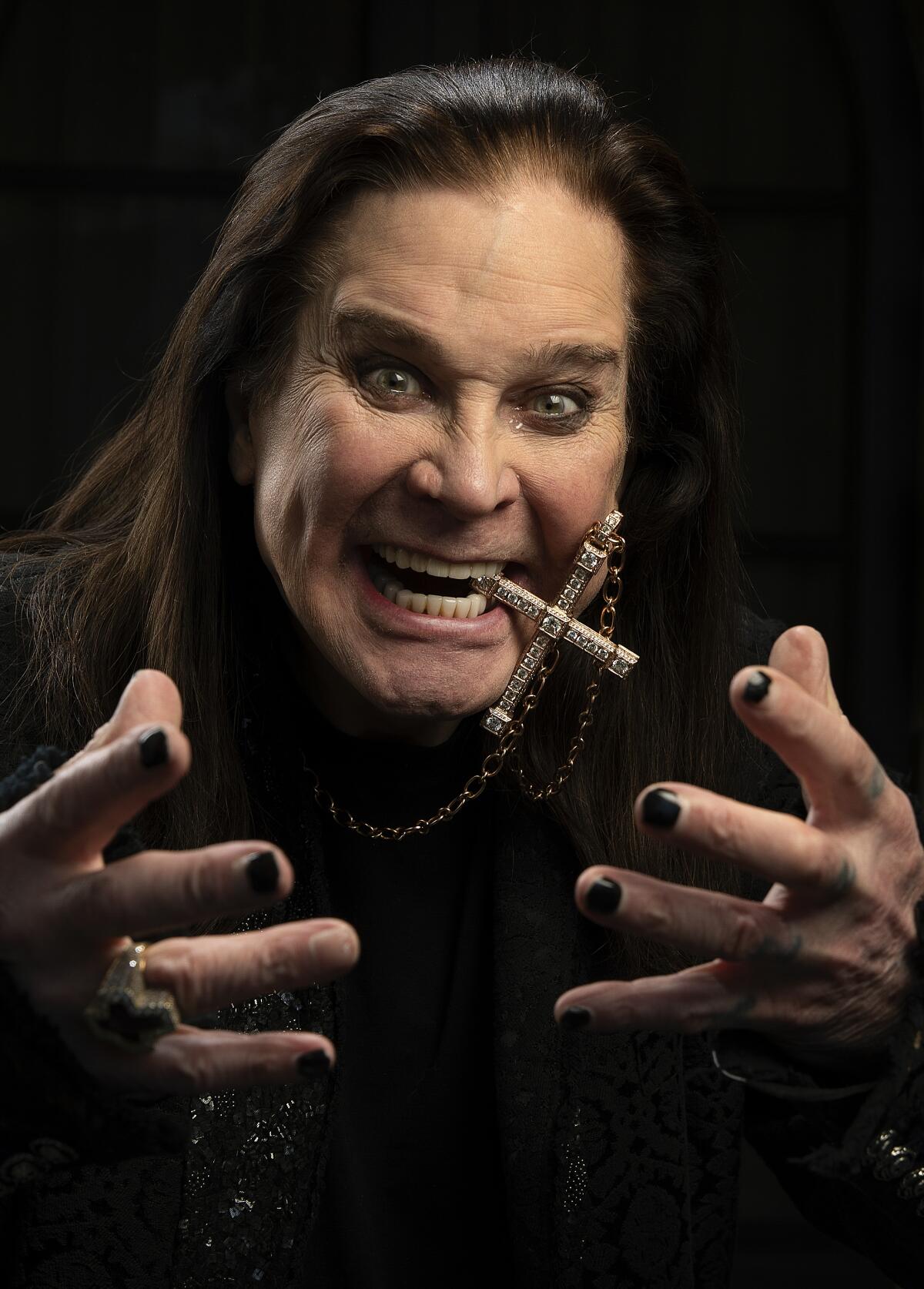Let’s Listen to “Mr. Tinkertrain” by Ozzy Osbourne: A Dark and Chilling Opening to No More Tears
When Ozzy Osbourne released his sixth solo studio album No More Tears in 1991, fans expected heavy riffs, twisted imagery, and the Prince of Darkness at his theatrical best. What they might not have expected was for the very first track, “Mr. Tinkertrain,” to dive headfirst into some of the most unsettling territory of his career. Equal parts sinister carnival ride and metal juggernaut, the song set the tone for an album that would become one of Ozzy’s defining statements of the 1990s.

The Shock of the Opening Track
Album openers often act as a mission statement. For No More Tears, Ozzy and his band—anchored by guitarist Zakk Wylde, bassist Mike Inez, and drummer Randy Castillo—made a bold choice. “Mr. Tinkertrain” does not ease the listener in. Instead, it drags them into a distorted nightmare world from its very first notes.
With chugging guitars, booming drums, and a warped sense of menace, the song immediately signals that this will not be a comfortable ride. It’s dark, disturbing, and deliberately provocative. Ozzy’s unmistakable voice, equal parts sneer and howl, sits at the center of the storm. He doesn’t sing this track with charm or melody; he inhabits it like a character, almost gleefully reveling in the grotesque imagery.

Zakk Wylde’s Crushing Riffs
By 1991, Ozzy had already gone through a revolving door of legendary guitarists, from Randy Rhoads to Jake E. Lee. Zakk Wylde, then still early in his career, was stepping into his own as not just Ozzy’s sideman, but as a full creative force.
On “Mr. Tinkertrain,” Wylde announces his arrival with crushing riffs that blend Southern-tinged grit with classic heavy metal power. His guitar tone is thick, almost suffocating, and perfectly complements the lyrical unease. Throughout the song, Wylde doesn’t just provide rhythm—he slashes through with lead flourishes that feel sharp, aggressive, and chaotic.
This marriage of unsettling subject matter with punishing guitar work gives the track its lasting power. It’s not catchy in a traditional sense, but it is unforgettable.

The Themes: Carnival of Fear
Part of what makes “Mr. Tinkertrain” so controversial is its lyrical theme. Ozzy, never afraid to push boundaries, takes on the persona of a predatory figure—someone you’d never want near your children. The “Tinkertrain” becomes a metaphorical carnival ride, a place where innocence is corrupted and danger lurks behind every smiling mask.
It’s important to note that Ozzy is not celebrating or endorsing these ideas. As with much of his work, he is playing a role—inhabiting darkness to force listeners to confront it. Like a horror film director, Ozzy thrives on discomfort. He wants the audience to squirm, to feel uneasy, to recognize that evil can sometimes come dressed in playful disguises.
When the song was first released, some critics accused it of being too shocking, even in poor taste. But others praised it as a bold artistic risk. Three decades later, it remains one of the most unsettling and conversation-provoking tracks in Ozzy’s catalog.
Setting the Tone for No More Tears
After “Mr. Tinkertrain” crashes to its chaotic conclusion, the rest of No More Tears unfolds with a mix of anthemic metal, introspective ballads, and signature Ozzy weirdness. The title track and “Mama, I’m Coming Home” would become staples of his career, cementing the album as a commercial and critical success.
But it’s “Mr. Tinkertrain” that ensures listeners never mistake this record for something tame. It’s a warning shot, a reminder that beneath the accessible hits lies a heart of darkness. Without this opener, the album might feel too polished or radio-friendly. With it, No More Tears becomes layered—part accessible rock record, part unsettling descent into Ozzy’s twisted imagination.
Fan Reactions Over Time
When the album first dropped, some fans were shocked. The grotesque subject matter was a step beyond what many expected, even from the so-called Prince of Darkness. Some radio stations refused to play the track at all, deeming it too disturbing for mainstream audiences.
But as time has passed, “Mr. Tinkertrain” has developed a cult following. For die-hard Ozzy fans, it represents his willingness to go places other artists wouldn’t dare. Younger listeners discovering No More Tears often note how jarring it feels compared to the smoother, more melodic tracks that follow.
For many, that’s the point. Ozzy wanted to challenge, not comfort. He wanted to pull listeners out of complacency and into a nightmare carnival they could never quite escape.
Ozzy’s Legacy of Darkness
Looking back, “Mr. Tinkertrain” is both a product of its time and a timeless example of Ozzy’s artistic philosophy. Heavy metal has always flirted with taboo subjects, using exaggeration and shock to explore the darker sides of humanity. Ozzy, more than most, understands that sometimes the most terrifying monsters are not supernatural—they’re disturbingly human.
By embodying a grotesque character, he forces listeners to confront uncomfortable truths. That is why the song still resonates. It may not be a hit single or a crowd-pleasing anthem, but it lingers in the memory like a nightmare you can’t shake.
Final Thoughts
Listening to “Mr. Tinkertrain” more than 30 years after its release is like stepping onto a haunted carnival ride. The track is abrasive, ugly, and unsettling—but deliberately so. It is Ozzy Osbourne at his most daring: unafraid to risk outrage, unafraid to inhabit darkness, and unafraid to make his audience deeply uncomfortable.
For some, it’s too much. For others, it’s a masterpiece of metal theater. Either way, it proves that Ozzy was never just a singer—he was, and still is, a provocateur, a performer, and a master of shock.
And for anyone brave enough to press play, “Mr. Tinkertrain” remains a chilling reminder that when Ozzy Osbourne invites you onto the ride, you’d better hold on tight.